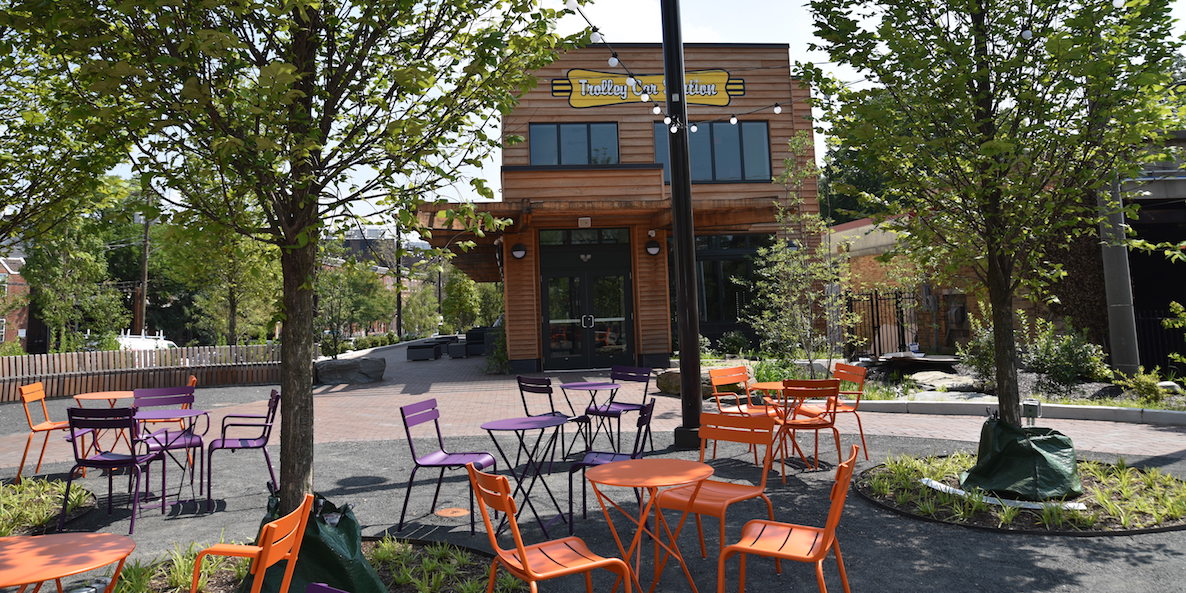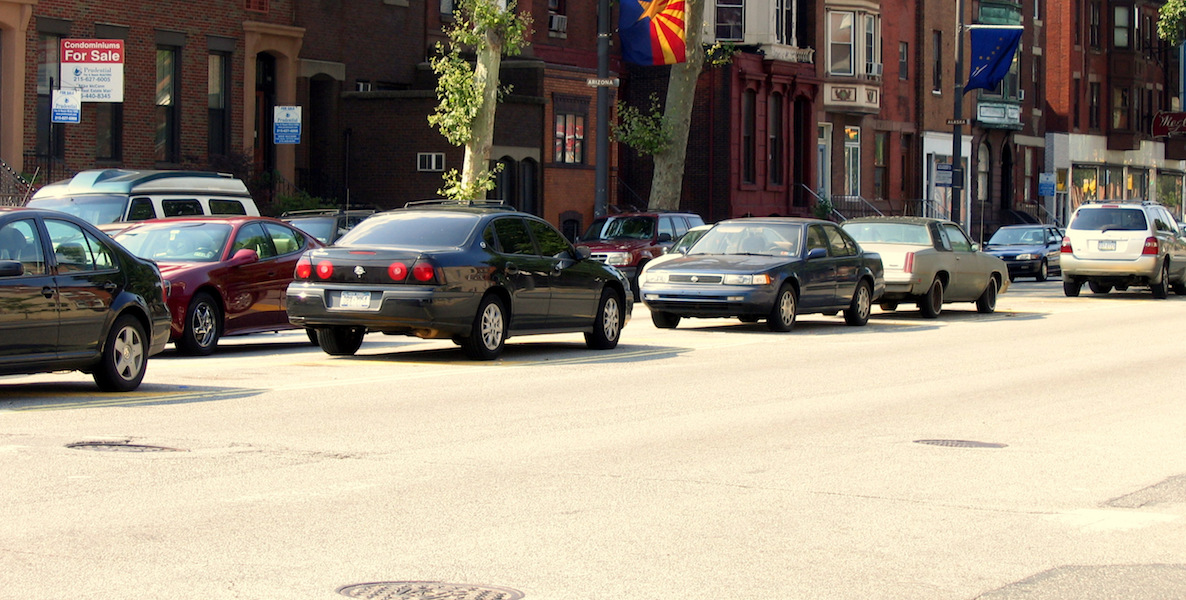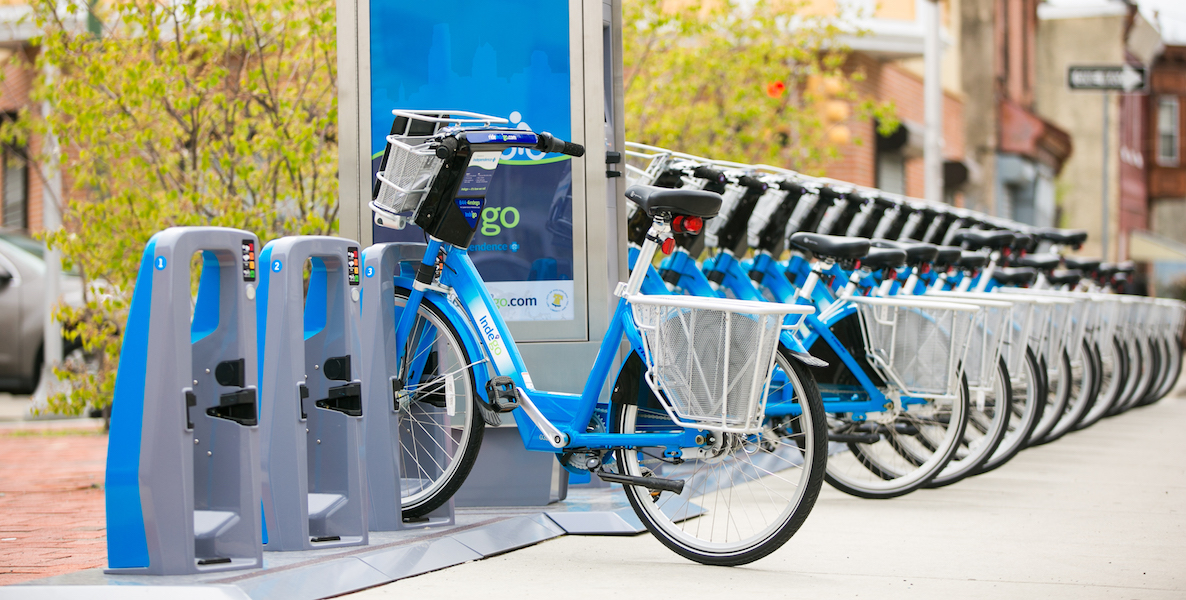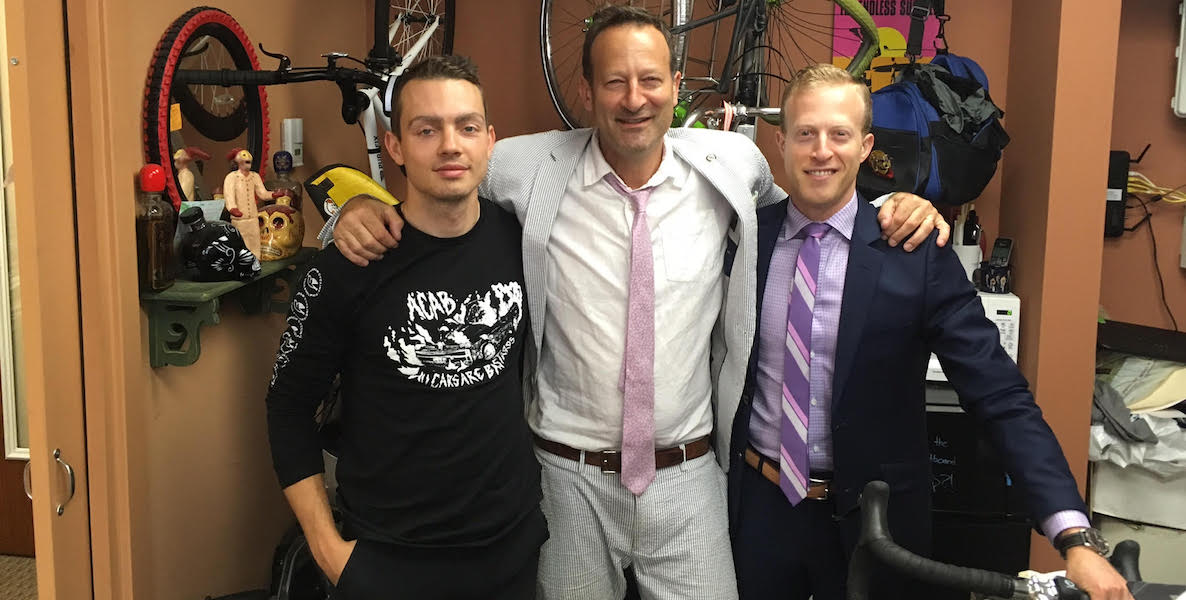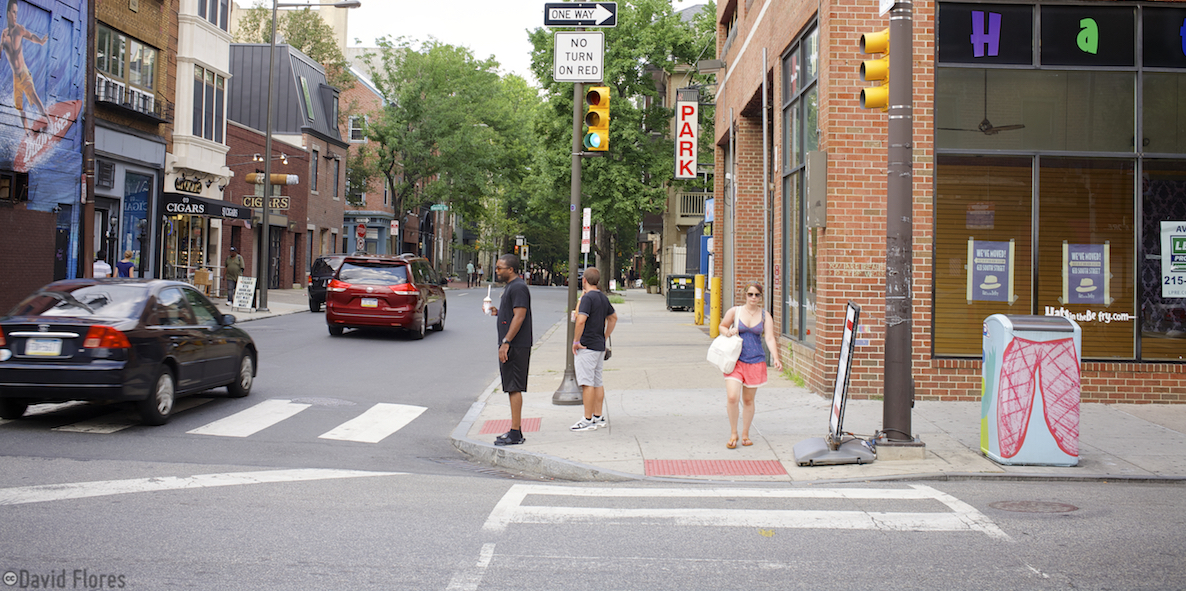It is heartening to see the City of Philadelphia incorporating cycling and pedestrian injuries into its annual Community Health Assessment, alongside childhood asthma hospitalizations and other alarming health indicators. With President Trump expected to finalize his dangerous repeal of federal automobile fuel efficiency standards, we will need to provide creative, local methods to reduce mobile-source pollution while improving traffic safety and anticipating the effects of climate change.
Transportation is the largest source of air pollution in Philadelphia and the leading contributor to climate-changing carbon dioxide emissions in the country. Although Philadelphia leads the nation in some disturbing health indicators, like traffic deaths per capita, we can protect pedestrians while reducing both the contributors and effects of climate change. So many indicators put North-Central Philadelphia at the highest risk, including pedestrian and bicycle crashes (excepting high-volume Center City), childhood asthma hospitalizations, lack of healthy food access, lack of recreational access, housing code violations and, ultimately, poverty.
Transportation is the largest source of air pollution in Philadelphia and the leading contributor to climate-changing carbon dioxide emissions in the country.
Expanded and innovative green-space in Philadelphia can encourage more efficient transportation habits while protecting pedestrians, in addition to improving drainage and mitigating the heat-island effect that raises temperatures in some city neighborhoods.
In Boston, Rose Kennedy Greenway is a great example of using urban space to reconnect neighborhoods with a stretching linear park over the highway. But there are plenty of great examples of green, resilient infrastructure within our own city. The newly christened Trolley Portal Gardens is an ideal confluence of flora and pervious pavement framing the city’s prized trolley network. Even something as simple as the large potted plants at 48th and Baltimore have worked wonders to improve pedestrian safety at that treacherous five-point intersection. Beyond looking pretty, absorbing stormwater and providing oxygen, the large potted plants literally protect pedestrians from automobiles while shortening crossing distances.
About transportation in PhiladelphiaRead More
The series of rain gardens around Warren G Harding middle school in Frankford have also reduced flooding at nearby parks and athletic spaces while providing a teachable moment to young students. Broad Street, the Ben Franklin Parkway and the infamous Roosevelt Boulevard (among many others) would certainly benefit from a similar treatment.
We can’t afford not to do this. After a marked improvement in air quality from 2012 to 2013, Philadelphia’s ground-level-ozone (smog) concentrations have stagnated, if not gotten worse. In 2017, Philadelphia suffered two consecutive “red ozone days” for the first time since 2011. This summer saw another “red ozone day” where it was unhealthy for all populations to be outdoors preceded by two consecutive days where it was unhealthy for “sensitive populations” like asthmatics to breathe, up to a quarter of Philadelphia’s population. The (brief) reprieve in air pollution can be attributed to at least 14 Pennsylvania power plants either retiring or converting to natural gas since 2010, but as Philadelphia and the region grows, automobiles will increasingly dominate the city’s air pollution burden.
Philadelphia’s asthma epidemic may be it’s most racially stratified public health emergency. Even though the city’s childhood asthma hospitalization rate is the lowest it’s been in 15 years, black and hispanic children in Philadelphia are more than three times as likely to be hospitalized for asthma symptoms than the average child in the United States. A black child in Philadelphia is more than twice as likely to be hospitalized for asthma symptoms than the average black child in the U.S. According to a study of national childhood asthma hospitalizations from 2000 to 2009 published by the Journal of Pediatrics, 13 percent less children were hospitalized nationally over that time period, but the same statistic actually saw a slight increase in the Northeast region of the country.
Even something as simple as the large potted plants at 48th and Baltimore have worked wonders to improve pedestrian safety. Beyond looking pretty, absorbing stormwater and providing oxygen, the large potted plants literally protect pedestrians from automobiles while shortening crossing distances.
The recently released National Climate Assessment identified that sea level is also rising three times faster in the Northeast than the global average. Although it is often ignored in development proposals, introducing more porous surfaces into the city could simultaneously reduce flooding events while giving pedestrians more protection from roadways.
About the health of your cityLearn More
While Philadelphia saw an initial decrease in traffic fatalities after adopting Vision Zero in 2016; 2017 and 2018 have seen a rebound in traffic fatalities with 99 and 88, respectively. Philadelphia’s recent “Strategic Transportation Plan” noted that half of employed Philadelphians drive to work and “are typically concentrated in wealthier areas far from the urban core.” A land-use assessment revealed that Philadelphia contains 2.2 million parking spaces for 1.56 million people.
Walk, bike, explore PhillyDo Something
A separate 2018 report from the Center City District concluded that travel times from Broad Street to 23rd increased 10 to 20 percent from 2013-17, with bus travel times up 25 to 40 percent for the same span. In that time Center City became the densest downtown in the United States, only behind Midtown Manhattan. While the proposal to institute a class of traffic enforcement officers could reduce illegal driving downtown, it will not reduce the causes or effects of climate change and increased air pollution.
The World Meteorological Organization just announced that 2018 will be recorded as the fourth hottest year ever globally, making the last four years the four hottest years ever. 2018 is already on record as the second most precipitous year ever in Philadelphia, only behind 2011. Philadelphia’s tragic traffic violence puts the city in a unique position to protect pedestrians while reducing climate-changing, asthma-inducing air pollution. We need real incentives for more fuel efficient vehicles with expanded green infrastructure to improve drainage, cool the city and create barriers between pedestrians and vehicles.
Russell Zerbo has been an advocate for the Clean Air Council since 2012. He currently serves on the Philadelphia Health Department’s Climate Change and Health Advisory Group and works within the Philadelphia Health and Environment Ethnography Lab based out of Drexel University. Reach him at rzerbo@cleanair.org.
Photo by David Flores via Flickr

